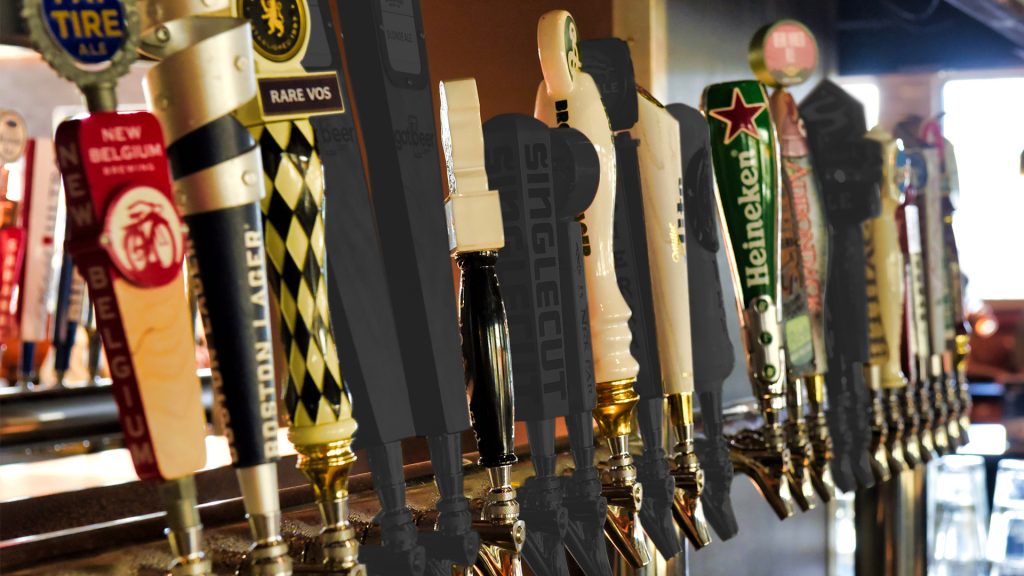After the heady days, a sobering trend: More craft breweries close than open

The swoop of Jeff Handojo’s smile deepens as he talks about the early months of 2015 — those heady days when he and his friends-turned-business-partners first opened their Houston brewery, 11 Below. Their very first sale was a keg of 7-Iron — the 4.5% blonde ale that remains on his tap list to this day — to Mo’s Irish Pub that March.
A couple months later, the brewers opened the doors to the public for tours and pours. And Houston, a sprawling city with a rapidly growing Millennial contingent thirsty for their own version of the nationally nascent craft beer scene, met those open doors with open arms.
“It’s been a ride since then,” Handojo tells Straight Arrow News, his eyes twinkling and crinkling with nostalgia.
And that ride — like all the good ones — has balanced dips and twists with incredible highs.
Until the crash.

What was behind the 2010s’ craft beer boom?
Handojo’s brewery was one of 18 to receive its license from the Texas Alcoholic Beverage Commission in 2014 — just one year after the state legalized taproom beer sales for small, startup shops. Between 2012 and 2015, the number of breweries in Texas increased from 84 to 189, according to data from the Brewers Association, a nonprofit that tracks all things craft beer. Relieving the legislative bottleneck helped Texas catch up with the rest of the nation, which had seen this kind of fast-paced growth for years.
Ronnie Crocker remembers the mid-2010s well. The author behind the 2012 book, “Houston Beer,” Crocker spent much of the decade cataloguing the explosive growth in his role as the Houston Chronicle’s beer reporter. When he first launched the Chronicle’s beer blog in 2009, Houston was home to only one craft brewery.
“I was there for the first pour of beer from No Label Brewing Company,” Crocker told SAN. “I was in the Karbach Brewery when Eric Warner was making a test batch. I was at Liberty Station for their first brew.”
He was everywhere. And so were framed copies of his columns, nailed to the walls of every brewery in town, like taproom trophies.
“I could, in my writing, say with total confidence, ‘This was the second craft brewery to open in Houston.’ ‘This was the third craft brewery,’” Crocker said.
That changed in the coming years. By 2018, “I didn’t know all the brewers by name. There were some breweries I hadn’t visited,” Crocker told SAN. He couldn’t always keep track of who opened before whom. “It had gotten that big that it was harder to pin down.”
While Houston’s boom was magnified due to pent-up demand from Texas’ strict brewery laws pre-2013, its growth echoed national figures. In 2012, the U.S. was home to 2,670 breweries, according to the Brewers Association. By 2015, the number was 4,847.
That’s a growth of 82% — lower, of course, than Houston’s 125% increase in that time, but the upward arc of numbers tracked by the Brewers Association had not seen such a steep climb since the first few years following the repeal of prohibition in the 1930s. And the race to the top continued — both nationally and in Texas — for the next several years.

Can we blame Gen Z for craft beer’s current struggles?
Millennials were a key driver. In 2004, when the oldest millennials were only 23 years old, the generation bought 1% of all craft beer sold; by 2018, they bought 20%.
“With the exception of millennials, every other generation’s share of craft volume sold decreased between 2004 and 2018,” according to a 2021 paper published by The University of Chicago Booth School of Business. “Therefore, even though all generations are purchasing craft beer, millennials are driving most of the growth.”
But as millennials began pushing 40 in the early 2020s, they did what every generation ahead of them had also done: They slowed down. And so did the craft beer market. In Texas, that ever-increasing headcount of breweries began flattening: In 2021 — the year in which the first Millennials turned 40 — the state was home to 406 breweries; one year later, the number had only grown to 407.

American culture loves a generational blame game. As Baby Boomers and Gen X pointed fingers at Millennials for “killing cereal” and choosing avocado toast over mortgages, Millennials now point to Gen Z’s lower drinking rates as evidence that the younger folks are now “killing” their beloved craft beer. But that’s only partly true.
“I’m not going to point a finger at Gen Z,” said Matt Gacioch, the staff economist at the Brewers Association, where he dives into industry data to suss out trends in the craft beer market. “I kind of think of the headwinds facing craft breweries in three buckets.”

What market forces have shifted the craft beer landscape?
Those buckets are pretty simple: Changing consumer behavior, including the fact that Americans of all generations — yes, including Gen Z — are drinking less alcohol; an increase in competition from a widening field of alcoholic beverages like hard seltzers, ready-to-drink cocktails and even THC-infused drinks; and economic factors like inflation, increasing real estate rates and tariffs that have affected canning costs.
In short, uphill line graphs have turned into an uphill climb.
And in 2024, a switch flipped.
“The Brewers Association, we track brewery openings and closings, and there were actually more brewery closings in 2024 than there were brewery openings, which is just a very distinctly different environment,” Gacioch told SAN.
The last year in which more breweries had closed than opened was 2005, according to Gacioch. And this national trend hit Texas — and Houston — hard.
Caroline Wallace, executive director of the Texas Craft Brewers Guild, shared data with SAN that showed 29 Texas breweries closed that year, while only 22 opened.
“I definitely think the rising cost of real estate has been a factor,” said Wallace. Her organization commissioned the Brewers Association to gather and analyze data to determine whether closures have been playing out at different levels in urban, suburban and rural areas.
“Our hunch, anecdotally, was that a lot of the openings we were seeing in new growth was definitely in more rural and suburban areas,” Wallace told SAN. The data analysis, performed by Gacioch, appeared to support that hypothesis.
In 2024, 5.4% of urban breweries across the U.S. closed, while 3.2% of the urban-area breweries were newly opened that year. In Texas, the spread was a bit wider: 7.5% of urban breweries closed, whereas 3.5% were new openings.
In rural areas — where price per square footage tends to be much cheaper — both nationally and in Texas, there were more brewery openings than closings.
“There are actually more urban closures than openings, but rural breweries really continue to grow,” said Wallace. “So I think when you look at that, I mean, real estate is just kind of the No. 1 factor.”

Has the craft beer bubble burst?
Handojo at 11 Below doesn’t mince words about how close he came to becoming part of the urban brewery closure statistic. Last summer, he and his partners made the decision to merge with two other local breweries, B-52 Brewing and Fortress BeerWorks.
“I’ll be very blunt with you: If this merger hadn’t happened, we would have closed our doors. Liquidation was really the only other viable option,” he told SAN.
There was the high rent, sure. But it went deeper than that.
“When you’re trying to overcome that kind of operational overhead, but then you see 30 and 40% sales decrease year over year, plus your materials costs up 20-25%, you’re getting pinched on both sides, right?” he said. “ I’d be the first one to tell somebody — look them straight in the eye and say — ‘Hey, we were pretty close to not being around.’”
But, he stressed, he is still around. And so are his partner breweries, along with many of the breweries that opened around the same time as 11 Below, though certainly many have shuttered. While the market has seen its share of trouble brewing, he’s still cautiously pint-glass half full on the future of his brewery as well as the industry as a whole. And he isn’t alone.
“It is important to think about where we are: 2008, nationally, about 1,500 breweries; last year, we’re almost 10,000,” Crocker told SAN. “That’s over 6X growth, so that’s pretty impressive.”
The amount of ink spilled in thinkpieces examining whether the current stagnation in growth means craft beer’s economic bubble has burst could fill all the kegs beneath the taps at 11 Below. But Crocker insisted this shift is less about bubbles and more about market correction.
“Is there uncertainty? I’m sure there’s a lot,” he said.
“I wouldn’t be opening a production brewery planning to come out and join the ranks of, say, a Saint Arnold that’s going to be shipping a lot of beer out. I think those days are probably gone,” Crocker told SAN. “Most of what we’ve seen in the last several years are the small breweries with taprooms.”
There are four, he noted, in walking distance to his house in Houston’s Heights neighborhood. Two more he can ride his bike to.
And come to think of it, he said, there’s a keg tapping a few miles away in a few days. He may have just made his weekend plans.
The post After the heady days, a sobering trend: More craft breweries close than open appeared first on Straight Arrow News.





